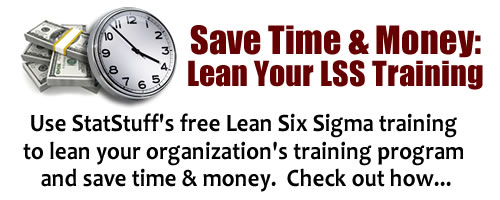Logistic Regression
| Term | Definition |
|---|---|
| Logistic Regression | A statistical model that is used like a regression analysis, but is based on or includes discrete (a.k.a. attribute or categorical) data. As a regression analysis, it can be used to assess how much certain factors influence the discrete output value, or to help predict future discrete output values. Three common types of logistic regression models can be used depending on the type of output discrete data being used: 1) a Binary Logistic Regression (BLR) is used when the discrete data are binary (i.e., having only two possible values like Yes/No, True/False, etc.); 2) an Ordinal Logistic Regression (OLR) is used when the discrete data are ordinal in nature (i.e., having more than two possible values that fall in an order or in scale with each other, like 1st, 2nd, 3rd, etc.; or Worst, Average, Best; or a Likert scale such as Very Dissatisfied, Dissatisfied, Satisfied, Very Dissatisfied); 3) a Nominal Logistic Regression (NLR) is used when the discrete data are nominal in nature (i.e., having more than two possible values that aren't in order with each other, like colors, locations, characteristics, etc.). |


